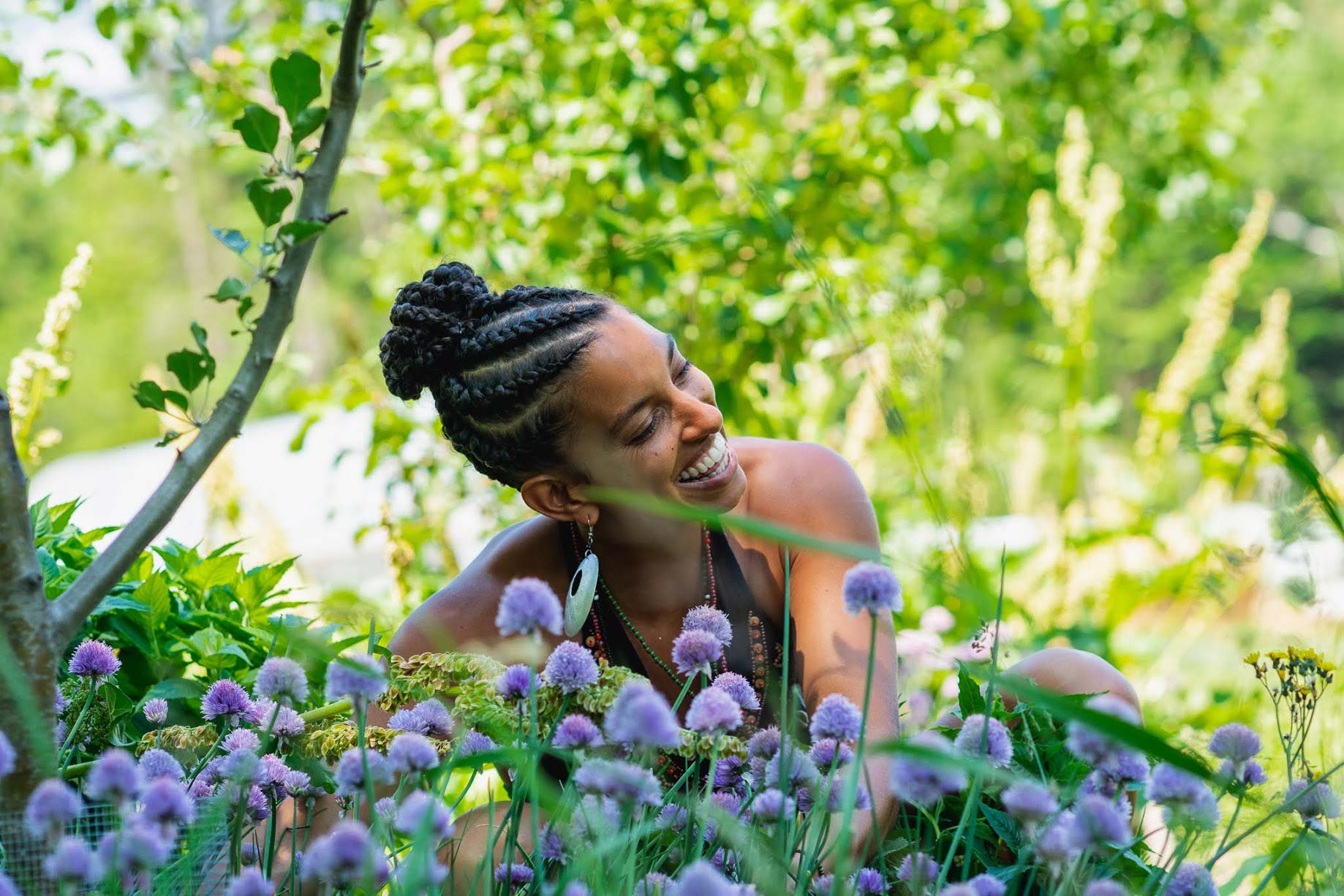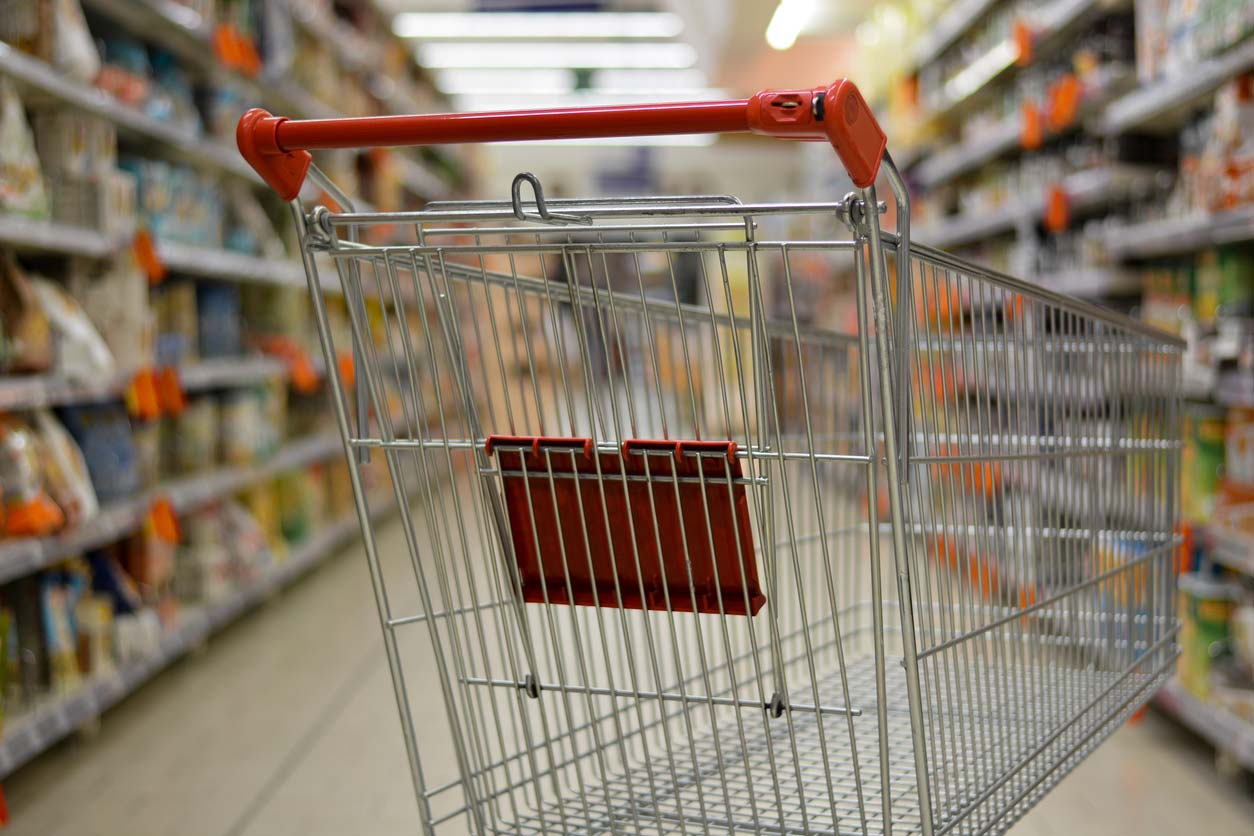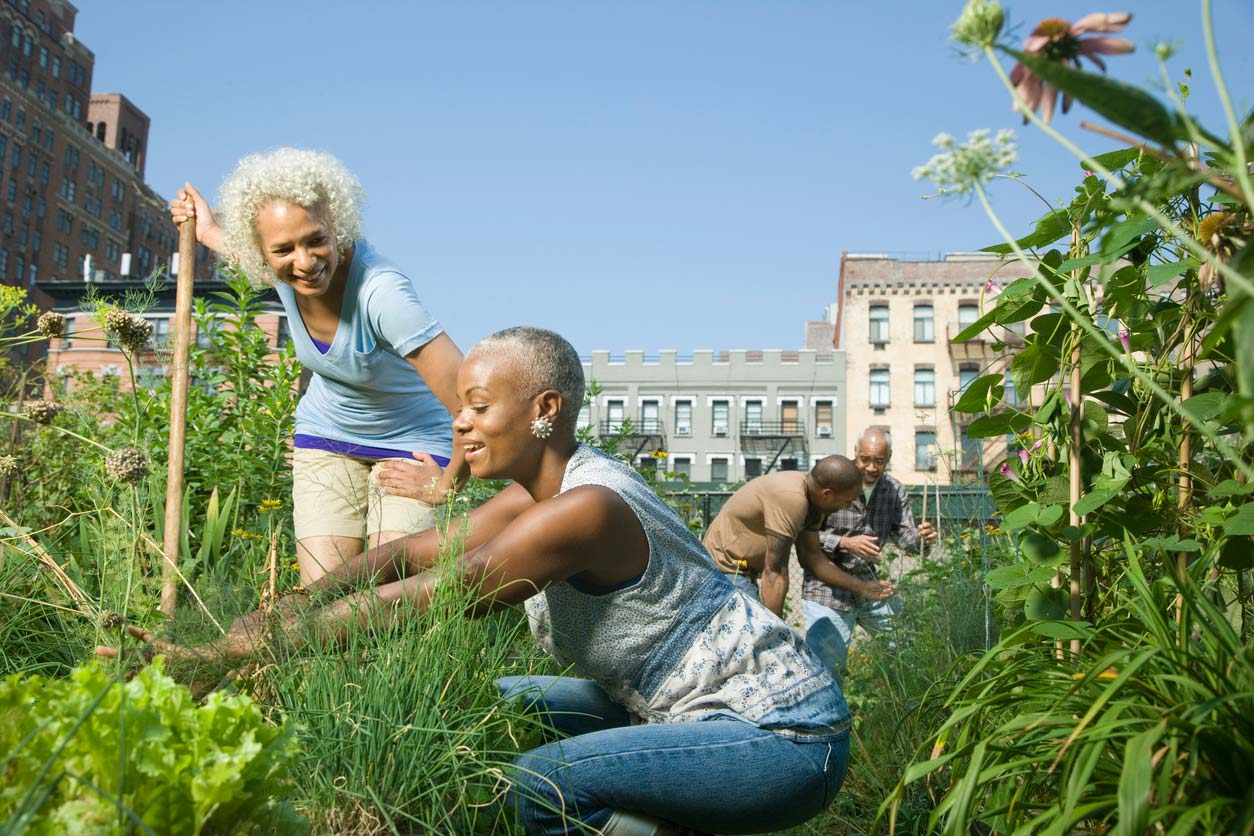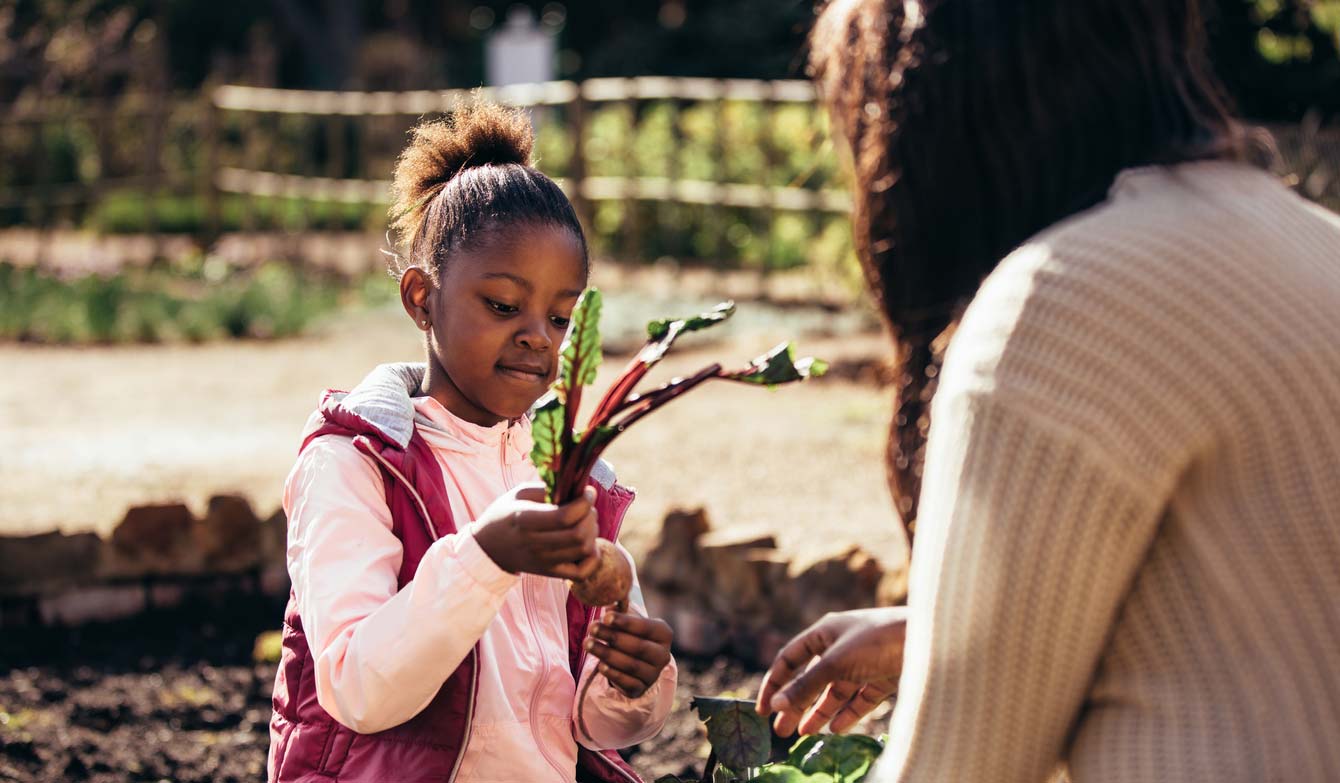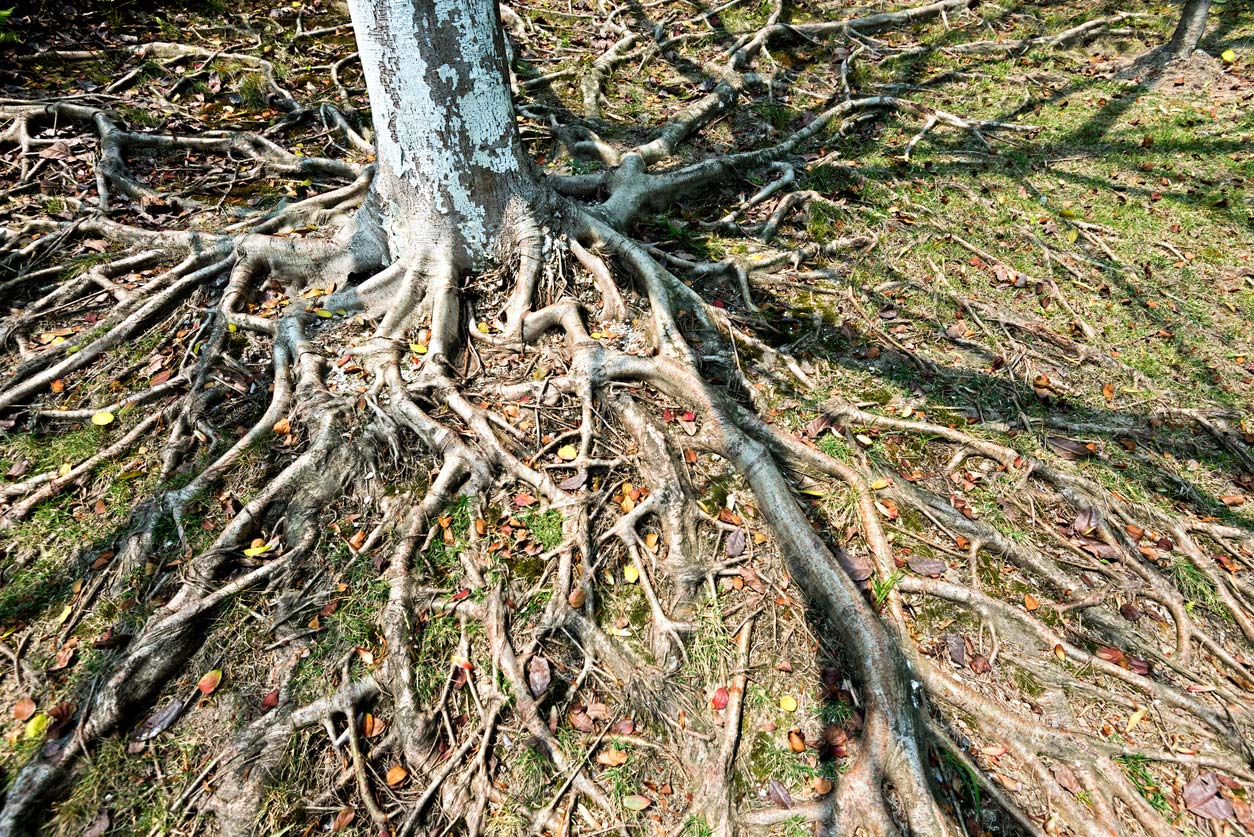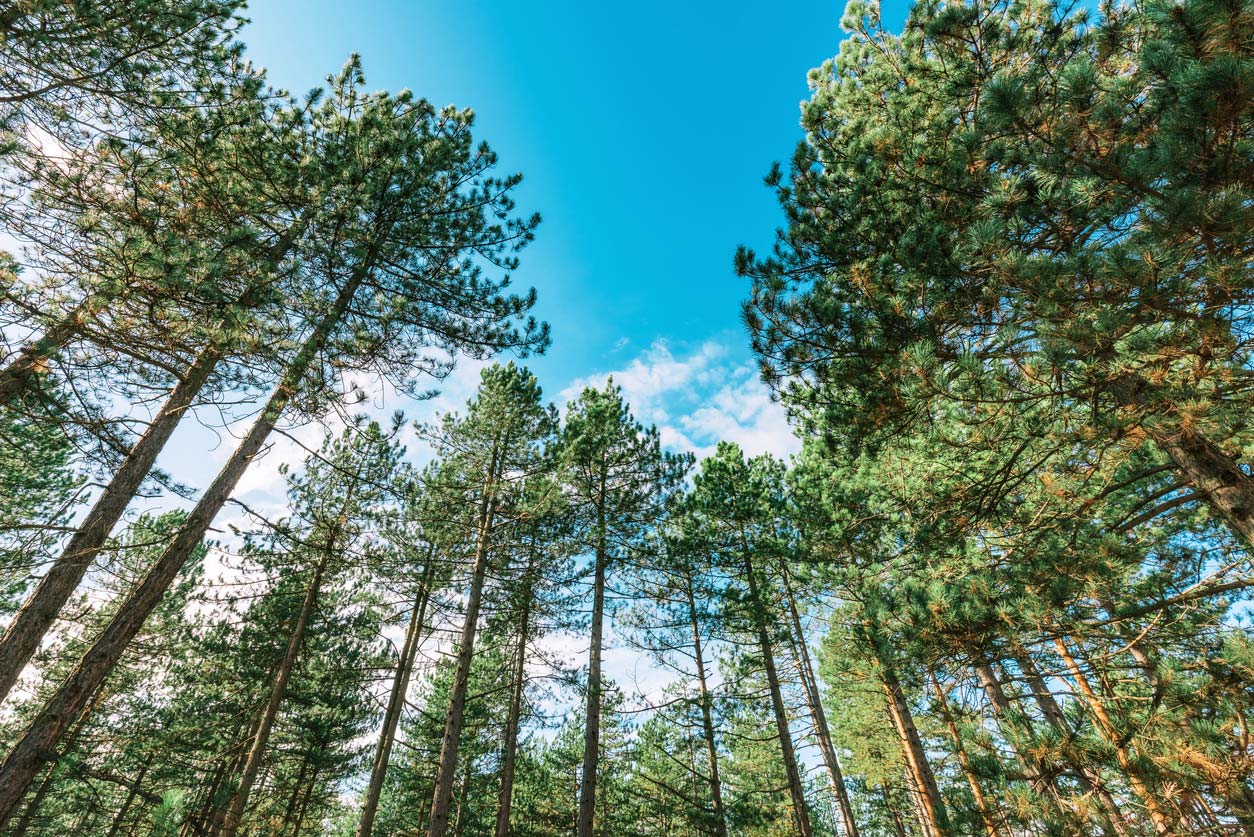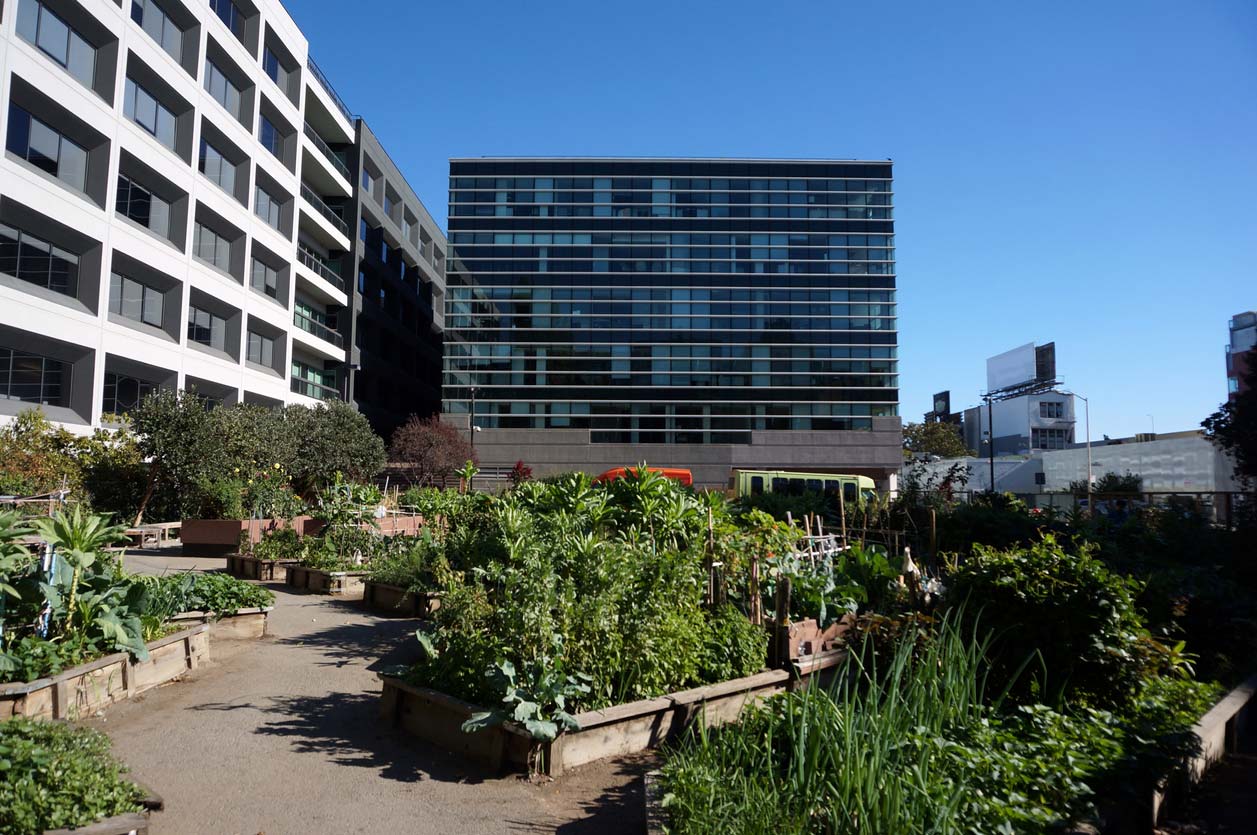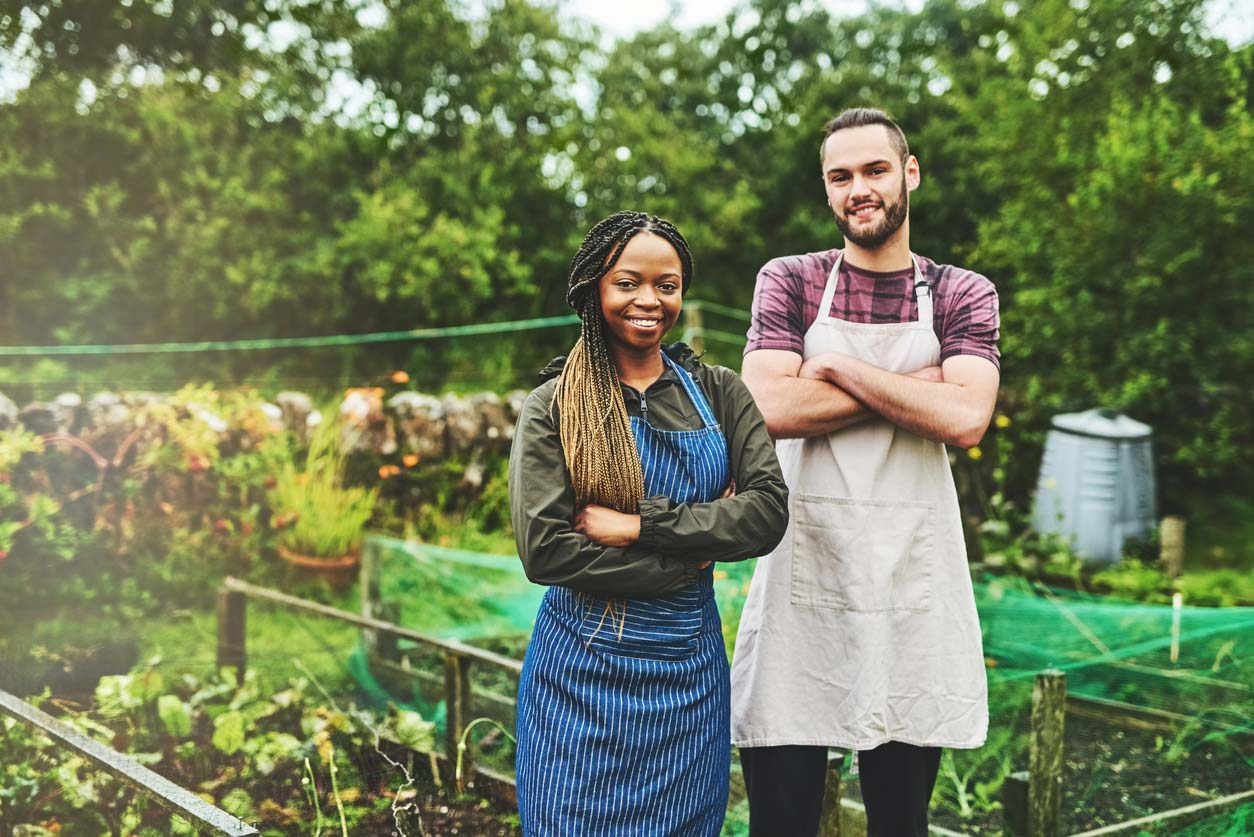Everyone deserves safe, healthy, and affordable food for their families. You shouldn’t have to be rich, have a certain skin color, or grow up in the right neighborhood, in order to be able to eat food that’s good for you. But not everyone has access to equal opportunities.
The health opportunity gap often plays out along lines of race and class. People who are white and have enough money enjoy a number of advantages that lead to better health. Typically, they can afford better diets. White people and people who have enough money tend to have access to more nutritious food and information about which foods are, in fact, healthier to eat. They have better housing and safer working conditions. There’s more green space and areas for recreation — and more opportunities to exercise regularly where they live. They have more access to health care services and are less exposed to various kinds of pollution.
All of this leads to well-documented health disparities. People of color and people of low income are far more likely to die from cancer, suffer from depression, be obese, have high blood pressure, and suffer from type 2 diabetes and heart disease.
What’s causing these health disparities? How does racism play into it? And most importantly, what can you and I do about it?
Recently, I sat down with Leah Penniman, co-founder of Soul Fire Farm, to ask her take. Soul Fire Farm is committed to ending racism in the food system. They grow healthy food for communities of color, and they’ve taught tens of thousands of people, of all backgrounds, how to grow healthy food, take active steps to dismantle racism, and build a healthier world for all of us.
Here’s a lightly edited version of our conversation.
Leah Penniman of Soul Fire Farm
https://www.youtube.com/watch?v=W2WJLjQZH_k
Below is the edited transcript of the video above:
Ocean Robbins: I’m Ocean Robbins, and I am thrilled to bring you this special interview with Leah Penniman, who is the co-founder and co-director of Soul Fire Farm.
Leah has over 20 years of experience as a soil steward and food sovereignty activist. She’s worked at The Food Project, Farm School, Many Hands Organic Farm, Youth Grow, and with farmers internationally in Ghana, Haiti, and Mexico.
In 2010, Leah co-founded Soul Fire Farm as a black-, indigenous-, and people of color-centered community farm committed to ending racism and injustice in the food system. She’s the author of Farming While Black: Soul Fire Farm’s Practical Guide to Liberation on the Land. And she’s one of the leading voices in the grassroots movement for food justice. I feel so honored to have this time with her.
Healthy, Ethical, and Sustainable Food for All
Ocean Robbins: I just want to speak personally for a moment. I founded Food Revolution Network with my dad in 2012. We’re committed to healthy, ethical, and sustainable food for all. As we’ve been continuing that mission, reaching millions of people, one of the things that keeps coming up, again and again, is that in order to be true to the “for all” part of our mission, it takes proactive intention.
Because there’s something of an apartheid right now in the world of food. Not everybody has access to the same farms, the same agricultural capacities, or the same financial resources. And when you look at it statistically, there’s a huge divide. Statistically, the darker your skin color in the United States today, the more likely you are to depend, for the majority of your calories, on unhealthy food.
And we want to change that. Which is why we’re here today to talk about what we can do and how we can be a part of transformation, to bring more healing, love, justice, and wellness for everyone. Leah, thank you so much for being here.
Leah Penniman: Thank you for your awareness and commitment to really making food accessible for all people, which is certainly what we stand for at Soul Fire. So thank you.
Farming While Black
Ocean Robbins: Absolutely. You know, your book, Farming While Black — which is wonderful by the way, everyone should get a copy — it’s dedicated to the African ancestors who, before boarding slave ships, braided seeds into their hair. And when I read that, I felt a chill go through my body. I want to ask you, how do those African ancestors inform the work that you do today?
Leah Penniman: Thank you for calling in the ancestors. You know, whenever I go out into the field each morning, I always call on the memory of my grandma’s grandma’s grandma, whose name is Suzie Boyd. She is one of the 12.5 million African people who were kidnapped from the shores of West Africa, forced onto slave ships, and forced to do the agricultural labor — unpaid — that built the multi-trillion dollar wealth that’s foundational to this country. And she had that audacious courage and foresight to gather up her millet, her okra, her cowpea, her black rice, and braid it into her hair as insurance, and in the belief that descendants would exist to inherit that seed.
So the way that informs my work on the day-to-day is I think about, you know, if my ancestors had the fortitude in the face of really unimaginable horror — watching their babies and cousins get snatched up and not knowing where they’d be next — if they had that courage to save seed for these descendants they hadn’t met yet, then who am I to give up on my own descendants, even in these really trying times? And so both physically and metaphorically, I take that seed that my ancestors have passed down, put it in the ground, and save it for the next generation. And those seeds are in the form of okra and cowpea as well as in the form of the farmer training that we do, the organizing that we do for more just policies.
Racism in the US Food System
Ocean Robbins: Thank you. You know, the legacy of farming as practiced in the industrialized world is interwoven with racism and injustice and exploitation of the land, of animals, and, of course, of human beings. As you know, the primary driver of slavery was agricultural.
And today, the treatment of farmworkers is pretty deplorable in the United States. Life expectancy for farmworkers in the state of California, where I live, by one estimate, is 49 years. Rates of cancer are off the charts because of all the pesticide exposure in the fields.
And yet I wonder if the act of growing food can be something we reclaim. It doesn’t have to be rooted in exploitation and domination and harm and injurious action. It can become something beautiful. And that’s what I see you doing.
Leah Penniman: Oh, thank you for saying that. As you mentioned, labor — it’s 85% Latinx and Hispanic people growing the food who are not protected by the same labor laws as other Americans. While being a farm manager is among the whitest professions.
Redistributing Resources
Leah Penniman: And then, as you mentioned, of course, food apartheid. Who gets to eat the food?
Ocean Robbins: Right.
Leah Penniman: You know, if you’re white in this country, you’re four times more likely to have a healthy supermarket in your neighborhood. And that’s why we work so hard on that. Both on the tangible grassroots level where we’re literally growing food and delivering it at low and no cost to the doorsteps of people under food apartheid, growing community gardens in urban spaces. But also on the policy level.
And so, we have a land trust that returns land to indigenous people and to other dispossessed farmers. We have a regional fund that accepts money and then distributes no-interest loans and grants to new and beginning farmers. And so, these are some of the sort of — the macro ways that we’re looking to redistribute some of the resources stolen through generations of slavery, sharecropping, and other forms of land-based oppression.
Food Deserts vs. Food Apartheid
Ocean Robbins: Thank you for that so much. There’s a lot here we could go into. (Like) how it is that we went from 14% of the farmers in America being African-American to 2% in the last century. The fact that the USDA recently settled a massive lawsuit for preferential loan treatment, basically discrimination against African-American farmers, which made it harder for them to keep their farms over the last century.
And, of course, we also have the accessibility issues. We have what some call food deserts. I don’t know if you use that term. But there’s no denying the fact that 23.5 million people in the US live in low-income neighborhoods located more than a mile from a supermarket. Mostly, we’re talking about urban settings here. So being more than a mile from a supermarket is significant and odd, given the population density. The fact is that black communities are half as likely to have access to large supermarkets as white communities of similar population density. And they’re more likely to be dependent on liquor stores, 7-Eleven’s, and convenience stores that stock up on junk food that is then causing heart disease, and type 2 diabetes, and obesity, and so many other health ailments.
So I’m curious, when you look at this, first of all, what are the challenges that we’re up against? And second of all, what can we do?
Why “Food Desert” Isn’t the Preferred Term
Leah Penniman: Absolutely. And we don’t use the term “food desert” even though it’s useful to understand the term because it is how the government describes a zip code that’s both low-income and is between one and ten miles from a supermarket, depending on the population density. The challenge with the term “desert” is that it implies a natural phenomenon. It implies a beautiful ecosystem that arose through a natural process. When in fact, there’s nothing natural at all about certain people relegated to food opulence and others to food scarcity, often on the lines of race. That’s really apartheid.
And there’s, of course, a whole history of how that came to be. Housing discrimination, through redlining, divestment in communities, urban renewal, gentrification, all of those systems at play that make your zip code one of the number one determiners of your life expectancy, again, often on race lines.
Housing discrimination, through redlining, divestment in communities, urban renewal, gentrification, all of those systems at play that make your zip code one of the number one determiners of your life expectancy, again, often on race lines.
– Leah Penniman, Soul Fire Farm
So, what can be done about it is systemic, and it’s not a quick fix. We need to address the fact that housing discrimination has actually increased in this country since the passing of fair housing laws in the 1970s. Actors go in with the same credit score and resumes, but depending if they’re black or white, they’re being shown properties or not. And then that determines the tax base, and that determines how much investment comes into communities or not.
Community Models
But I think also there are really beautiful models to look at. For example, in Detroit, out of the Detroit Black Community Food Security Network, they not only formed a seven-acre urban farm, but they formed a co-op — a grocery store that is owned and run by the residents in the communities impacted by food apartheid.
And so, how do we as a society, learn to actually trust the leadership of the people most impacted by these harms and invest in the institutional infrastructure for us to lead and solve our own problems? You know, that co-op should have the Kellogg grants, the Ford Foundation grants. You know, it should have all the support that it needs to get off the ground. And right now, it’s using GoFundMe in order to establish basic renovations that it needs. And that’s ridiculous because if a community is coming together to solve these really entrenched racial issues, systemic issues, then we need to be 100% behind it. And so, all of the Federation of Southern Cooperatives, Detroit Co-Op, (and other good organizations doing good work to bring healing where it’s needed) need funding.
Culturally Appropriate School Lunches
Ocean Robbins: Absolutely. What about school meal programs? More than 30 million kids depend on them for some part of their food survival. They’re not exactly known for offering the healthiest options. They’re under-resourced, dramatically. They’re often dependent on commodity crops that are given, essentially surplus by the USDA for little to no-charge in order to meet the caloric needs, but not necessarily the nutritional needs of the students in their care.
But some people worry that if schools do provide healthier options, the students may not actually want them. Because if they just put a bunch of kale out there, the students may just go for the french fries and not eat the kale. So how do we address creating the education, the demand, and the interest? Is it about making more culturally appropriate, recognizable foods? Is it about school food service programs getting better at preparation? Is it about education in the classrooms? How do we cross that bridge?
Leah Penniman: That’s a really good question. So yes, it’s about preparation of that food being high quality. It’s about fully funding the program. I mean, with a dollar or two per kid, per lunch, and these entrenched contracts with Aramark and Sodexo, there’s no way that you’re actually going to get good vegetables into the kitchen. So we need to be able to really divorce our city contracts from these large corporate aggregators. And the Health, Environment, Ag, and Labor Food Alliance (the HEAL Food Alliance) is working on a real food and real meals campaign around this to get cities to break up with, to really divorce from these big companies and source locally.
Getting Kids Interested and Involved in Food
Leah Penniman: And then, yeah, having young people actually involved in food preparation, in terms of bringing in recipes, getting in the kitchen…
You know, we have thousands of young people come through Soul Fire Farm every year. And they all eat the food because they grew it; they cooked it; they participated. So the idea that somehow black and brown folks need to be educated to eat right is really a smokescreen. It’s not the issue. It’s about resourcing really good meals for our young people.
Ocean Robbins: Studies show us that growing food and preparing food is the best way to incite appetite for that food.
We have teenagers. I know you do too. And when they’re involved in preparing a meal or planting anything in the garden or harvesting it, they’re so much more likely to eat it. And there’s a certain joy that comes from that feeling of connection to what we’re eating. And it strikes me that part of what you’re doing is helping people to reclaim their relationship to food itself.
Reclaiming Heritage Foodways
Leah Penniman: Absolutely. And there’s some really powerful work out there. For example, the Heritage Foodways organization does some work creating food pyramids that are based on indigenous and ancestral foodways. And there are wonderful authors out there like Mike Twitty and Bryant Terry, who are also uplifting our ancestral foodways. Because there can be a myth out there that white people eat that “healthy food.” And that our foods as black people are all fried and unhealthy. But it’s actually not the case. The basis of a West African traditional diet is legumes, tubers, green vegetables, fish, and a lot of spices.
And so, finding ways to connect to that and really reach back beyond the time when our diets were very colonized by both corporations and also slave masters, to be frank. And to reclaim those heritage foodways is super important.
And kids are so excited about that. They are so excited to cook with those foods. And if you spice it properly, it tastes good. It’s just that some people don’t know how to use spice, so…
Human Nature
Ocean Robbins: You know, when you just named the traditional staples of the West African diet, it struck a chord in me. I’m thinking about how healing it is, how important it is to reshape our identity as human beings. The truth is that we all have roots in a way of living and a way of feeding ourselves, that’s aligned with our well-being and the well-being of the planet. And however far estranged we may be, however far back into our ancestors we may have to look to find those roots, I think that we have, within our DNA, something of the wisdom of everything all of our ancestors have ever experienced. And that lives in us. And it sort of gets to this core nature of what does it mean to be a human being.
Because, I’ve got to admit, sometimes I look at human beings — and as a white man, maybe this is a particular perspective I have — and I feel ashamed of what we do. I feel ashamed of how we treat animals. I feel ashamed of how we treat each other. I feel ashamed of how we treat the Earth. And I feel ashamed of how we produce food and have turned it into a commodity that’s exploitative and destructive and extractive. And at the same time, I believe that we’re also capable of something else. And it strikes me that there is a wisdom in the ancestors, as I hear you speak of it, that we can draw upon to return ourselves into greater alignment with who we really are.
The Importance of Cultural Heritage
Leah Penniman: I appreciate you saying that. The Table Underground is a really fun food justice podcast, and there’s an episode where Owen Taylor of True Love Seeds talks exactly about that. He talks about how his Italian ancestors had to give up their language, their culinary traditions, their religion, dialect, and really assimilate. And in the process, leave behind this wisdom.
And it made me think how important it is for European heritage folks, for all folks. Talk to your grandparents. Go back. You know, read, pray, dream. And really try to connect to what it was before this project of domination took over the imagination of your people. Because we all have, actually, indigenous roots if you go back far enough. I’m talking about pre-conquest Europe, pre-conquest Africa, pre-conquest Asia. And how do we understand what it is to remember the source of that wisdom and try to start implementing that in our lives? So I really appreciate you saying that.
Drawing Inspiration from Nature
Ocean Robbins: Thank you. Leah, what have you learned from farming, from soil, from the rhythms of nature? And how has it informed how you relate to the problems facing humanity?
Leah Penniman: That’s a huge question. I would say there is nothing of value that I haven’t learned from nature. One lesson is that I’m always watching nature and trying to emulate biomimicry on the spiritual plane.
Recently, Soul Fire Farm has gotten a lot of pressure to grow bigger, franchise, or create some strange empire of food justice, which is really weird. But I look at the forest. And if there’s a pine tree on the edge of the forest that’s getting a lot of sunlight, she doesn’t actually grow six times taller than all the other trees. She takes those extra sugars and minerals and dumps them into a web of mycelium fungal hyphae to share with the other pine trees and non-pine trees all throughout the forest so that they’re all fortified. And they can have their mast year together. And so, if one is weak, the others hold her up.
And so, I think about appropriate growth of organizations, of movements, as really being this trans-local, dispersed, mutuality web of interdependence. And not so much replicating a model of hierarchy and domination. And that’s something that our model of growth as an organization and a movement is really modeled after — the way the forest shares its resources. We want to be a superorganism like the forest.
How Growing Food Can Change You
Ocean Robbins: Beautiful. If someone doesn’t grow a ton of food or become a true farmer, do you think that growing something, growing anything, planting any seed, still changes their life in some way?
Leah Penniman: Absolutely. And even if you can’t plant a seed, like make friends with a tree. I’m a big fan of literal tree-hugging. You know, your exhale becomes the tree’s inhale.
But yeah, you can grow sprouts on your kitchen counter. You can grow a little salad garden with turnip greens and lettuce and scallions right on your window sill. You could even grow a pepper in a pot on your balcony. And so, I really am a big proponent of starting small with whatever space you have. And that relationship of watching your plant every day, nurturing it, and encouraging it, I think, awakens a part of us that has been asleep and that we all need to be in touch with. So I encourage anyone and everyone to grow something if you can.
Heavy Metals in Urban Soil
Ocean Robbins: One of the places a lot of people are growing food is in community gardens and school gardens. And yet, often we find that in urban communities, the soil is contaminated with lead and other heavy metals. Is there anything we can do about that so that it’s safe to eat that food?
Leah Penniman: Absolutely. And this is very personal to me because when we were living in Worcester, Massachusetts, and had our first child, Nashima, she was lead-poisoned from a community garden. And we didn’t find out until her one-year checkup. And, of course, we did all the things a parent would do to help their child. But as activists, we also started to think about what about the million other children in this city. And we went around testing soils and doing remediation. We started a youth co-op called Toxic Soil Busters that’s still doing remediation.
What to Do About Contaminated Soil
Leah Penniman: So all that to say, there are a few options. Probably the lowest hanging fruit, the easiest thing to do, if you’re either unsure about your soils or you have soils that are contaminated with lead is to build a raised bed. You can just use some pine, which will last a couple years. If you have access to hemlock, it’ll last four or five years. Build a raised bed. Fill it with clean compost or topsoil or a mix with a weed barrier at the bottom. And grow right into that. And just make sure that the pathways are covered with wood chips.
If you’re ambitious and willing to do a little bit of studying, you can actually bioremediate using plants like geranium, sunflower, and mustard. It can be a one to three-year process to get those plants to actually clean the soil. And it requires cordoning off the area to keep it safe while you’re doing the remediation — and really some training. But that’s something that we did in certain areas and were able to get lead levels down from around 2,000 to under 400, which is considered safe enough to grow in.
Ocean Robbins: Do the plants just take in the lead, and then you have to consider them toxic? Or do they actually transform it in some way?
Leah Penniman: They take in the lead. Lead and arsenic are elements, and they actually can’t be broken down through a normal chemical process, only through an atomic process. And plants, unfortunately, are not atomic. They don’t have that power to degrade atoms. So they are just moving it into the body of the plant. The plant becomes toxic then and needs to be disposed of and moved into a safe, lined landfill, where it’s not gonna seep out into the environment.
Hydrocarbons — organic materials, including, oil, and even plastics, can actually be degraded by fungi, algae, and plants because they can break down their compounds rather than elements. Again, probably beyond the scope of this podcast. But if you’re a nerd like me, and you like chemistry, there’s a lot to learn out there.
Ways You Can Take Action Right Now
Ocean Robbins: So if some of our audience want to help contribute to healthy, ethical, and sustainable food for all, if they want to maybe make a positive impact, or make a contribution, or be in right relation to marginalized communities, what are some of the top things they can do?
Leah Penniman: Well, the good news, as my daughter says, is the food system is everything it takes to get sunshine onto your plant. It’s such a wide arc. There are lots of points of intersection and lots of right answers.
A couple of sort of easy things you could do right now is on the Soul Fire Farm website there is a reparations map, which contains black, indigenous, and people of color-led food and farming projects all across the country. You can look on that map, find a project near you, and see what it is they need. It might be volunteer work. It might be money, or land. Try to support your local BIPOC-led organizations.
Another thing you can find at SoulFireFarm.org is an action guide that has a whole bunch of policies and bills that need to be passed into law in order to protect farmworkers, to return land to indigenous people, to protect black farmers from losing more land, and so forth. And so, please do call your congressperson. Tell them that you support specific pieces of legislation, like the ones you will find in the action guide. That can be really, really helpful. And, of course, donate to black and brown-led organizations. All the lists are all over the internet right now. But we have our list as well at Soul Fire Farm of orgs that need support. So that’s how you can pitch in.
Soul Fire Farm’s Capital Campaign
Ocean Robbins: You also have a capital campaign, and could you tell us a little bit about that and how people might be able to contribute if they want to step forward in a bold way to carry your work forward into the future?
Leah Penniman: Oh, thank you for bringing that up. I was going to forget about it. But, so, Soul Fire Farm, despite its national reach, even international some would say, operates out of the living room of a single-family home and has thousands of people coming through for training programs.
So recently, the county health department said this is no longer cute. Y’all need to build a commercial building so that you’re up to fire code, and ADA, and health regulations, and so forth. So we’re in the process of raising money and building these buildings so that we can continue to operate and even expand our farmer training programs, which have a multi-year waiting list. And it’s very exciting because my partner Jonah is a master builder. So everything is straw bail, timber frames, natural plaster, and renewable energy. And we’re even accepting clay soil from our alumni to put into the natural plaster, so everyone’s land will be a part of these buildings.
So go to our website, SoulFireFarm.org, if you want to pitch in for the capital campaign and help us continue to grow the next generation of black farmers for years to come.
Ocean Robbins: Wonderful. My wife and I are proud donors to Soul Fire Farm. I think this work is so important. I am so grateful to you for your courage, your truth-telling, and your willingness to embrace so many painful realities with such dignity and love. And the smile and the joy that comes through in your work is so magnificent. I think it takes a special being to face the darkness, pain, and violence that you do, and to continue being a stand for the love and the joy that are possible in all of us.
I thank you, Leah, for who you are, for what you do, for the stand you take, and really for lighting a way for all of us to see the way forward, that is worthy of who we are as human beings.
Leah Penniman: Thank you so much. Love is truly the only answer to society’s problems, so thank you for affirming that. And I wish you all the best with your endeavors.
Ocean Robbins: And you as well.
Tell us in the comments:
- Were you aware of Leah Penniman and Soul Fire Farm’s work?
- Do you have a relationship with soil or growing your own food?
- Does this interview inspire you to take any positive actions?
